-
Seed Shop
-
Feminized
Cannabis seeds -
Autoflowering
Cannabis Seeds -
Regular
Cannabis Seeds -
F1 Hybrid
Cannabis Seeds -
CBD
Cannabis Seeds -
Zamnesia
Cannabis Seeds
-
Top 10’s
- Top 10 Feminized Seeds
- Top 10 Autoflowering Seeds
- Top 10 Regular Seeds
- Top 10 USA Cannabis Strains
- Top 10 Zamnesia Seeds
-
Favourites
- Beginner Strains
- Below 1% THC
- Classic Cannabis Strains
- Cup Winners
- F1 Hybrids
- Fast-Flowering Strains
- High CBD Strains
- High THC Strains
- Mix Packs
- Zamnesia Exclusive Collabs
-
-
Headshop
-
Vaporshop
- Spare Parts & Accessories
- AirVape X
- AirVape XS GO (2021)
- Arizer Air MAX
- Arizer Extreme Q
- Arizer Solo 2
- Arizer V-Tower
- Arizer XQ2
- Boundless CFC 2.0 Vaporizer
- Boundless CFX
- Boundless TERA (V3)
- CRAFTY+
- DaVinci IQ2
- DaVinci IQC
- DaVinci MIQRO
- Dr. Dabber Boost EVO
- Dr. Dabber Stella
- DynaVap Omni 2021
- DynaVap VapCap "M" PLUS 2023
- DynaVap VapCap 'M' 2021
- DynaVap VonG (i) Titanium
- Dynavap The "B" Series
- Eagle Bill
- Firefly 2+
- Flowermate Aura
-
Healthshop
-
Smartshop
-
Shroomshop
-
Growshop
-
Seed Shop
All CategoriesSeed Shop
-
Vaporshop
All CategoriesVaporshop
- Top 10 Vaporizers
- Spare Parts & Accessories
- AirVape X
- AirVape XS GO (2021)
- Arizer Air MAX
- Arizer Extreme Q
- Arizer Solo 2
- Arizer V-Tower
- Arizer XQ2
- Boundless CFC 2.0 Vaporizer
- Boundless CFX
- Boundless TERA (V3)
- CRAFTY+
- DaVinci IQ2
- DaVinci IQC
- DaVinci MIQRO
- Dr. Dabber Boost EVO
- Dr. Dabber Stella
- DynaVap Omni 2021
- DynaVap VapCap "M" PLUS 2023
- DynaVap VapCap 'M' 2021
- DynaVap VonG (i) Titanium
- Dynavap The "B" Series
- Eagle Bill
- Firefly 2+
- Flowermate Aura
- Flowermate Cap Pro
- Flowermate Slick
- Flowermate V5.0S Pro
- G Pen Connect
- G Pen Elite II
- G Pen Micro+
- G Pen Pro
- G Pen Roam
- Hydrology9 Vaporizer
- Hyer Big-E Rig
- MIGHTY
- MIGHTY+
- PAX Mini
- PAX Plus
- PLENTY
- Pax 3 Vaporizer
- Puffco Peak PRO Smart Rig
- Puffco Peak Smart Rig
- Puffco Plus
- Storm Vaporizer
- The Proxy (Puffco)
- VOLCANO CLASSIC
- VOLCANO HYBRID
- Vape-Lifter
-
Smartshop
All CategoriesSmartshop
- Top 10 Smartshop
- Zamnesia Gift Cards
- After Party
- Aphrodisiacs
- Aromatherapy
- Blue Lotus
- CBD Vape Juice
- Capsule Machines
- Crystals, Gemstones & Minerals
- Dream Herbs
- Drug Tests
- Extracts
- Happy Caps
- Herbal Tea
- Herbs & Seeds
- Incense
- Kanna
- Kratom
- LSA Seeds
- Mescaline Cacti
- Microdosing
- Nootropics
- Relaxing
- Salvia divinorum
- Smart Seeds
- Stimulants
- Supplements
- Tinctures
- Vape Herbs
-
TRIBE
All CategoriesTRIBE
- My Membership
- Spend Gift Points
- Exclusive products
- Earn Extra Gift Points
-
TRIBE
- Early Access
- Refer a Friend
- Information
-
TRIBE
-
Language
 United States
United States
Friday, 25 April and Thursday, 01 May 2025*
Absinthe: Everything You Need To Know
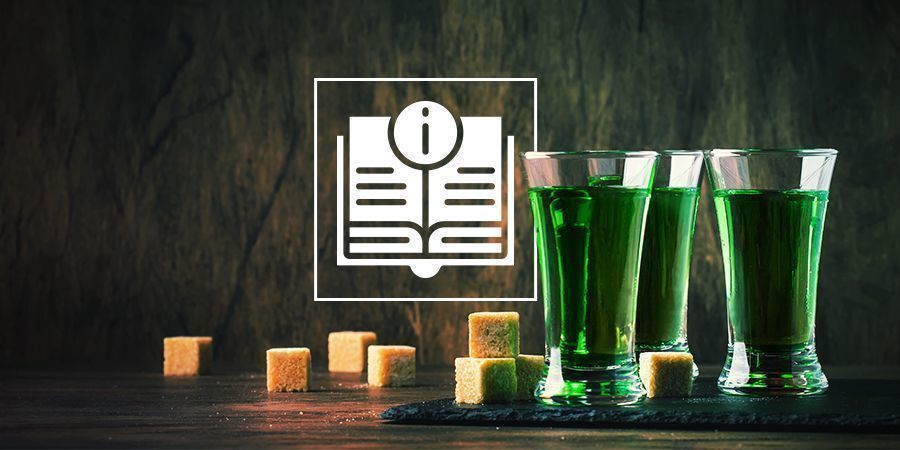
Absinthe is a fascinating beverage in many ways. From the unique ingredients to the controversial history, there's a lot to learn about this spirit, and we’re excited to teach you about it!
If you were to ask the average person about the craziest thing they ever drank, there's a good chance absinthe would come up. For whatever reason, it's garnered a reputation as the "bad boy" of the world of spirits and alcohol in general. But why is that, exactly? Does it really do something strange that other booze doesn't? Or, is it just like any other spirit, besides the appearance and marketing?
It's, well, a bit more complicated than either of those answers, but we're happy to explain.
WHAT IS ABSINTHE?
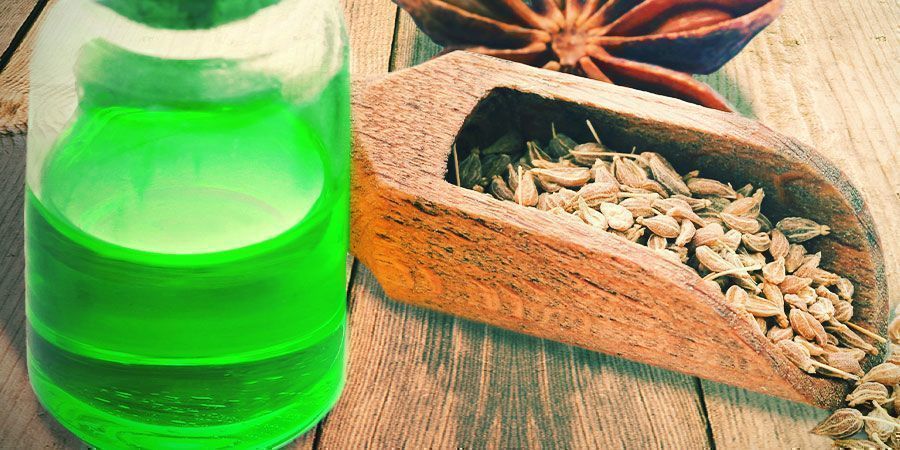
So, what are we even talking about, anyway? Simply put, absinthe is a highly alcoholic anise-flavoured spirit. If you've never heard of that before, or think you have no idea what it would taste like, you might be surprised with yourself.
Have you had black jelly beans before? Well, guess what? You know what anise tastes like! How about real black licorice? No, there's no anise in licorice, but the uniquely sweet and aromatic flavours are remarkably similar.
Besides anise, absinthe is also derived mainly from the leaves and flowers of the grand wormwood plant. The wormwood plant is also responsible for the name itself and is scientifically known as Artemisia absinthium.
The Latin "absinthium" comes from the Greek word "apsínthion", which, in turn, literally translates to "wormwood". It's known by other names besides absinthe, though. If you dig through some literature from the time it came on the scene (more on that later), you'll notice that it's referred to as "la fée verte", which is French for "The Green Fairy".
This is in reference to the spirit's green colour; but, as we'll discuss further on, it isn't always that way.
HISTORY OF ABSINTHE
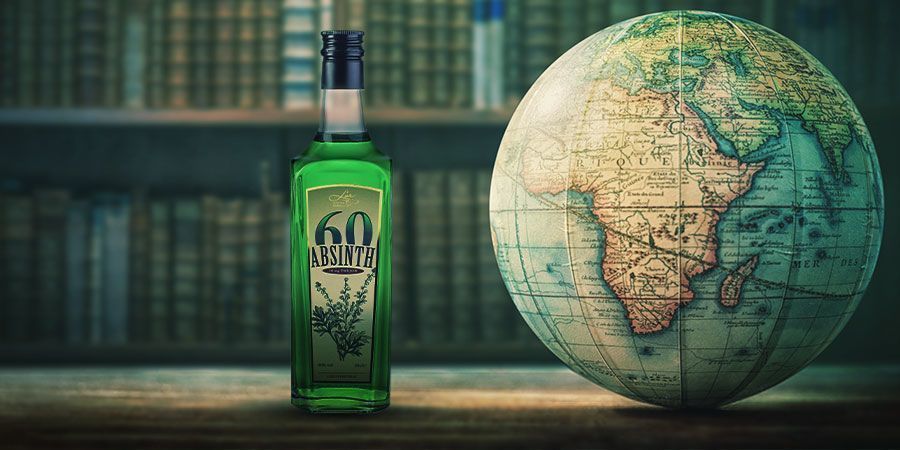
Before we get any further into the specifics, we should take some time to appreciate the history. We know certain forms have existed for a long time, with wormwood-derived alcohol being traced back to the ancient Greeks. Funnily enough, in that time, it was referred to as "absinthites oinos". This wasn't quite the spirit we know today.
"Modern" absinthe only first appeared in the late 18th century, courtesy of the Henriod sisters of Couvet, Switzerland. Even then, rather than a spirit to be leisurely consumed, it was sold as an elixir. Nowadays, we can not imagine marketing an alcoholic beverage to have magical properties.
Either way, the formula was appealing enough for one Major Dubied to buy it from the Henriods in 1797 and establish the first absinthe distillery in Couvet that same year. This company would eventually become Pernod Fils, one of the most popular absinthe brands of the 1800s.
It kept a steady presence in the first half of the 19th century, becoming more popular in the 1840s as French troops used it to prevent malaria. Enjoying it much more than medicine, the soldiers kept it around as they went home. Soon enough, it started popping up at bistros, bars, cafés, and cabarets across the country.
While it's associated with high society today, it was found in the glasses of fat cats and starving artists alike. The price dropped even lower than it was by the 1880s, and it became an even bigger phenomenon from there.
ABSINTHE: DANGERS AND HALLUCINATIONS?
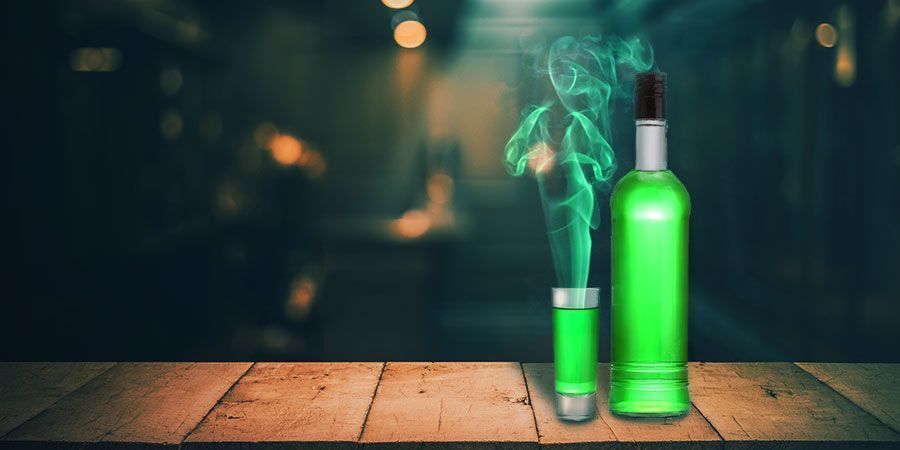
As with anything that gets too popular, though, a movement began to form against it. Smear campaigns from the temperance movement and wine industry alike painted absinthe drinkers as the worst of the worst.
Critics claimed that it would drive you insane and drive you to crime. Then, in 1905, a Swiss farmer named Jean Lanfray killed his family, then tried to kill himself, after drinking absinthe. He had drunk far more wine and brandy, only having two glasses of absinthe, but the association was already made.
Public outrage peaked after the murder, with over 80,000 people signing a petition to ban the Green Fairy. By 1908, absinthe prohibition was made Swiss law, and countries including the Netherlands, France, and the US followed suit over the next few years. These bans would not get lifted until much later on, with the US only lifting its ban as recently as 2007.
But is it actually dangerous? Besides what we've just discussed, we're sure you've heard that absinthe can also make you hallucinate. However, despite what many may tell you, there's no evidence (Layton, 2007) that absinthe causes any sort of hallucination. In fact, there's no evidence suggesting it causes any further intoxication past the “regular” effects of alcohol. That whole rumour is more of a misconception about one of the ingredients, namely wormwood.
EFFECTS OF ABSINTHE
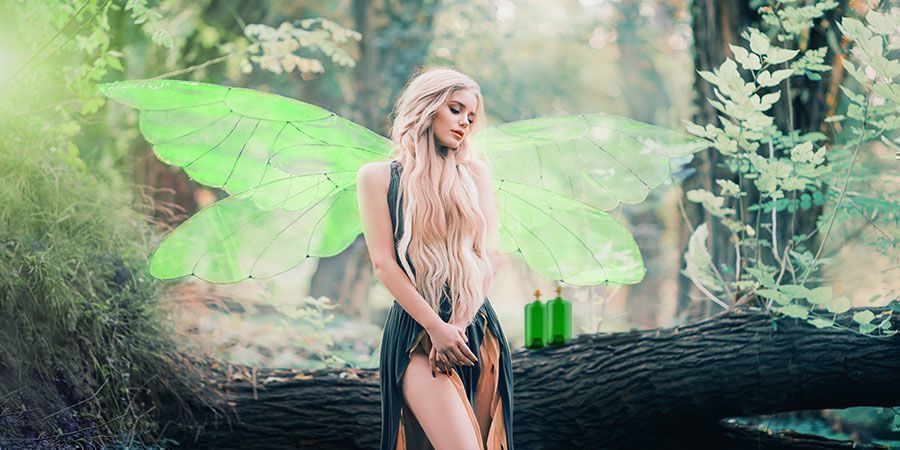
Today, we're a lot more familiar with the effects of wormwood than the ancient Greeks and not-so-ancient Europeans. As we brought up earlier, no matter how many green fairies that expat at the bar says he's seeing, wormwood has no hallucinogenic effects, and there's nothing else in absinthe that would cause those effects.
Furthermore, the alcohol in absinthe will hurt you far sooner than the wormwood. In fact, the only reported wormwood toxicity case (Weisbord et al., 1997) came from a guy who took a 10ml shot of concentrated wormwood oil thinking it was absinthe.
HOW ABSINTHE IS MADE
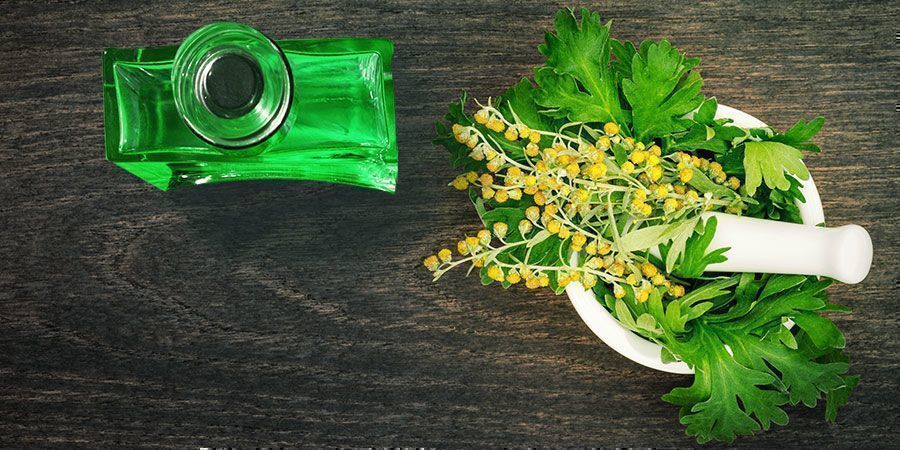
Let's turn away from wormwood for now, though. It's one of the main ingredients of absinthe, but it's about time we discuss how the drink is actually made. Besides grand wormwood, green anise and sweet fennel are the two main herbs used in the drink’s production.
First, the three main ingredients are combined with high-proof alcohol, which is derived from white grapes, in a copper still. The ingredients soak overnight, giving the alcohol their flavour and aroma in a process known as maceration. From here, the distillers have two choices, both of which they make regularly.
The first choice is to reduce the current distillate until it hits 60% alcohol, which will produce what's called "Blanche", or white absinthe. Yes, that's right, not all absinthe has to be green. However, the green colouring is an iconic aspect of the drink, and there's a special way absinthe-makers obtain it. This, of course, is their second choice.
After the first maceration, the distillers hold off on reduction and instead throw it in another still with hyssop, petite wormwood, melissa, and other herbs (depending on the distiller) for a second maceration. As the chlorophyll from these other ingredients transfers to the absinthe, the beloved green colour eventually appears. From there, they dilute it with water to hit a target alcohol level of 62%. Then, voilà! Absinthe is born.
HOW TO PREPARE AND DRINK ABSINTHE
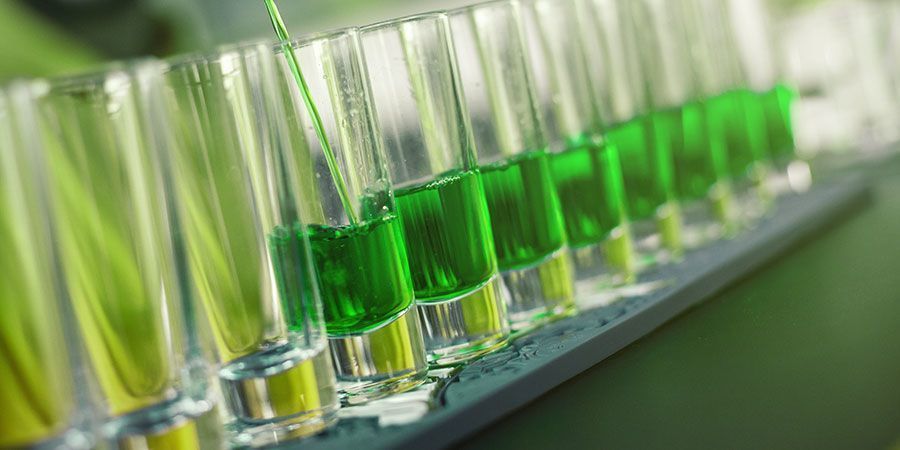
Now that you know what it is, where it came from, and how it's made, we can probably guess the next question on your mind: "How should I drink it?". There are many ways, but the correct method to enjoy absinthe is the so-called "Absinthe Drip". Here's how to do it!
CLASSIC PREPARATION OF ABSINTHE
- Pour one part absinthe into a chilled glass. A parfait glass will work nicely and give it that classy touch, but a wine glass (or any glass for that matter) will work as well.
- Place a slotted spoon over the top of the glass, and place a sugar cube on the spoon, over the slots.
- Slowly drip 3–5 parts cold spring water over the cube, into the absinthe. The absinthe will turn slightly opaque.
- Stir and serve the glass on a doily or saucer.
- Enjoy!
Note: On occasion, absinthe drinkers like to douse the sugar cube in absinthe and ignite it to caramelize the sugar, before extinguishing it with the cold spring water. Go ahead and give that a go if you wish; it definitely adds a bit of fun and flair to the absinthe ritual.
ABSINTHE COCKTAILS
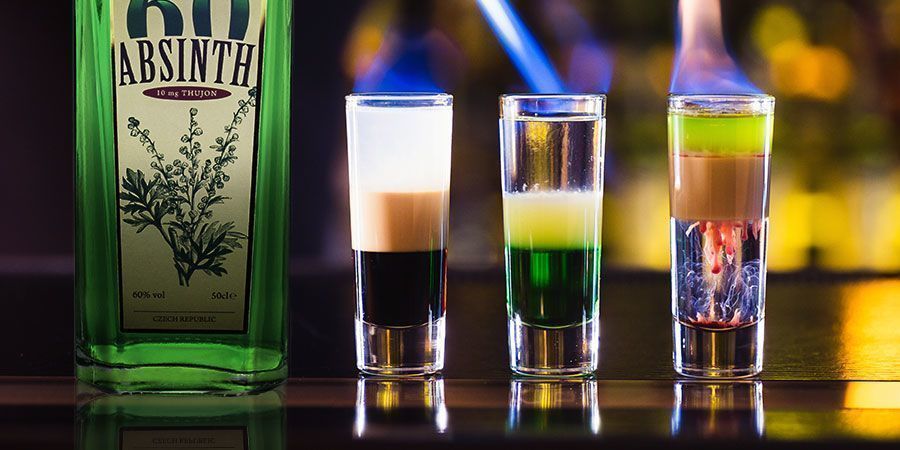
You've got more than a few options here, but we wanted to narrow it down to the best. Here are a few excellent cocktails that use absinthe in fascinating ways.
1. DEATH IN THE AFTERNOON
This cocktail comes courtesy of none other than Ernest Hemingway himself. No, it's not just named after his book; he actually created and named it for a book of celebrity cocktail recipes! His instructions were simple: "Pour one jigger absinthe into a Champagne glass. Add iced Champagne until it attains the proper opalescent milkiness. Drink three to five of these slowly". Definitely stick to one at a time, though.
2. ABSINTHE SAZERAC
While absinthe isn't the main ingredient, it plays a major role in this cocktail. First, mix rye, a crushed sugar cube, two dashes of Peychaud’s Bitters, and ice together in a mixing glass. Then, grab a chilled Old Fashioned glass, pour some absinthe in, coat the inside, and pour out the extra. Strain the other ingredients into the Old Fashioned glass. Then, squeeze a lemon slice over the drink, rub the peel on the rim, and serve.
3. GREEN BEAST
This cocktail will work nicely as a punch for your next party. In a large bowl, combine equal parts absinthe, lime juice, and simple syrup. Next, add 5 parts cold water and thinly sliced cucumber. We find the coolest way to do so is to cut the cucumber in two, lengthwise, and to then remove the soft seedy part with a teaspoon. Then, use a mandoline slicer or potato peeler to create long, paper-thin strips.
4. ABSINTHE SUISSESSE
Breakfast! The perfect time to break out the absinthe, right? Actually, right! Here, a shot of absinthe is paired with an egg white, cream, and an almond-flavoured syrup called Orgeat. If you head to New Orleans, you might see some people enjoying this in the morning instead of coffee.
5. CHRYSANTHEMUM
This is a rather uncommon combo. The cocktail consists of Benedictine liqueur, dry vermouth, and absinthe. Given the amount of flavours in each ingredient, this drink is the equivalent of a whole ballroom dancing in sync.
How To Make Absinthe With A DIY Absinthe Kit

- Julia Layton. (31-03-2021). Does Absinthe Really Cause Hallucinations? | HowStuffWorks - https://science.howstuffworks.com
- Steven D. Weisbord, Jeremy B. Soule, & and Paul L. Kimmel. (18-09-1997). Poison on Line — Acute Renal Failure Caused by Oil of Wormwood Purchased through the Internet - https://www.nejm.org
- France
- Germany
- International
- Italy
- Netherlands
- Spain
- United Kingdom
- United States
You might also like
-

 3 min
25 March 2021
Can Absinthe Make You Hallucinate?
The myth of the "green fairy" is one of the most famous yarns associated with an alcoholic beverage. Yet, the truth of the matter is likely far less dangerous (and potentially less exciting) than lore ...
3 min
25 March 2021
Can Absinthe Make You Hallucinate?
The myth of the "green fairy" is one of the most famous yarns associated with an alcoholic beverage. Yet, the truth of the matter is likely far less dangerous (and potentially less exciting) than lore ...
-
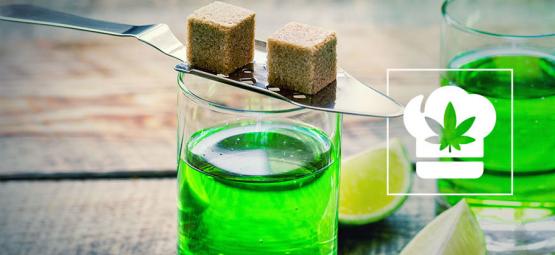
 2 min
2 February 2017
How To Make Absinthe At Home
For anyone interested in trying absinthe, why not opt for the Absinthe Starter Kit? This kit provides the opportunity to make your own absinthe at home, without the risk of bringing about another proh ...
2 min
2 February 2017
How To Make Absinthe At Home
For anyone interested in trying absinthe, why not opt for the Absinthe Starter Kit? This kit provides the opportunity to make your own absinthe at home, without the risk of bringing about another proh ...
-
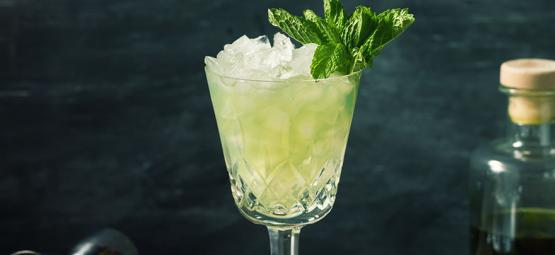
 4 min
14 November 2016
5 Myths About Absinthe
Absinthe, the green fairy has made its revival in Europe after decades of being banned. Many myths deserve to be busted. Let's do it for the green fairy! ...
4 min
14 November 2016
5 Myths About Absinthe
Absinthe, the green fairy has made its revival in Europe after decades of being banned. Many myths deserve to be busted. Let's do it for the green fairy! ...
Categories
-
Seed Shop
- Feminized Cannabis Seeds
- Autoflowering Cannabis Seeds
- Regular Cannabis Seeds
- F1 Hybrids
- CBD Seeds
- Zamnesia Seeds
- Top 10 Autoflowering Seeds
- Top 10 Regular Seeds
- Top 10 USA Cannabis Strains
- Top 10 Zamnesia Seeds
- Top 10 Feminized Seeds
- Beginner Strains
- Below 1% THC
- Classic Cannabis Strains
- Cup Winners
- F1 Hybrids
- Fast-Flowering Strains
- High CBD Strains
- High THC Strains
- Mix Packs
- Zamnesia Exclusive Collabs
- Amnesia Seeds
- Blueberry Seeds
- Cheese Seeds
- Diesel Seeds
- Gorilla Seeds
- Haze Seeds
- Kush Seeds
- Purple Seeds
- Skunk Seeds
- White Widow Seeds
- Zamnesia Seeds
- ACE Seeds
- Advanced Seeds
- Amsterdam Genetics
- Anesia Seeds
- Auto Seeds
- Barney's Farm
- Big Buddha Seeds
- Bomb Seeds
- BSB Genetics
- BSF Seeds
- Buddha Seeds
- Bulldog Seeds
- Cali Connection
- Cannarado Genetics
- CannaBioGen
- CBD Crew
- CBD Seeds
- Compound Genetics
- The Dank Seeds
- Dark Horse Genetics
- Delicious Seeds
- Devil Harvest Original
- Dinafem
- DNA Genetics
- Doctor's Choice
- Dr. Underground
- Dutch Passion
- Elite Seeds
- Eva Seeds
- Exotic Seed
- Expert Seeds
- FastBuds
- Female Seeds
- Fenocan
- Flash Auto Seeds
- French Touch Seeds
- Garden of Green
- GeneSeeds
- Genehtik Seeds
- G13 Labs
- Grass-O-Matic
- Greenhouse Seeds
- Grow Your Own (DNA)
- Growers Choice
- Homegrown Fantaseeds
- House of the Great Gardener
- Humboldt Seed Company
- Humboldt Seed Organization
- Kalashnikov Seeds
- Kannabia
- The Kush Brothers
- Light Buds
- Little Chief Collabs
- Medical Seeds
- Ministry of Cannabis
- Mr. Nice
- Nirvana Seeds
- Original Sensible
- Paradise Seeds
- Perfect Tree
- Pheno Finder
- Philosopher Seeds
- Positronics Seeds
- Purple City Genetics
- Pyramid Seeds
- Rare Dankness
- Reggae Seeds
- Reserva Privada
- Resin Seeds
- Ripper Seeds
- Royal Queen Seeds
- Sagarmatha Seeds
- Samsara Seeds
- Seedstockers
- Sensation Seeds
- Sensi Seeds
- Serious Seeds
- Silent Seeds
- Soma Seeds
- Spliff Seeds
- Strain Hunters
- Sumo Seeds
- Super Sativa Seed Club
- Super Strains
- Sweet Seeds
- T.H. Seeds
- Top Tao Seeds
- Vision Seeds
- VIP Seeds
- White Label
- World Of Seeds
- Zativo Seeds
- Seed Banks
-
Headshop
-
Vaporshop
-
Healthshop
-
Smartshop
- Top 10 Smartshop
- Zamnesia Gift Cards
- After Party
- Aphrodisiacs
- Aromatherapy
- Blue Lotus
- CBD Vape Juice
- Capsule Machines
- Crystals, Gemstones & Minerals
- Dream Herbs
- Drug Tests
- Extracts
- Happy Caps
- Herbal Tea
- Herbs & Seeds
- Incense
- Kanna
- Kratom
- LSA Seeds
- Mescaline Cacti
- Microdosing
- Nootropics
- Relaxing
- Salvia divinorum
- Smart Seeds
- Stimulants
- Supplements
- Tinctures
- Vape Herbs
-
Shroomshop
-
Growshop
- Top 10 Growshop
- Top 10 Plant Seeds
- All Seeds
- Cacti
- Chilli & Pepper Seeds
- Companion Plants
- Edible Plant Seeds
- Exotic Seeds
- Flower Seeds
- Fruit Seeds
- Herb Seeds
- Interior Plant Seeds
- Microgreens
- Psychoactive Plant Seeds
- Sprouting
- Vegetable Seeds
- Wellness Plant Seeds
- After Harvest
- Climate Control
- Fertilizer
- Grow Tents
- Harvest, Dry & Cure
- LED Grow Lights
- Plant Seeds
- Propagation
-
Merchandise
-
Sale section
Account
Information
Our Offers
Our website won't work without these cookies activated. Therefore functional cookies can't be disabled.






















